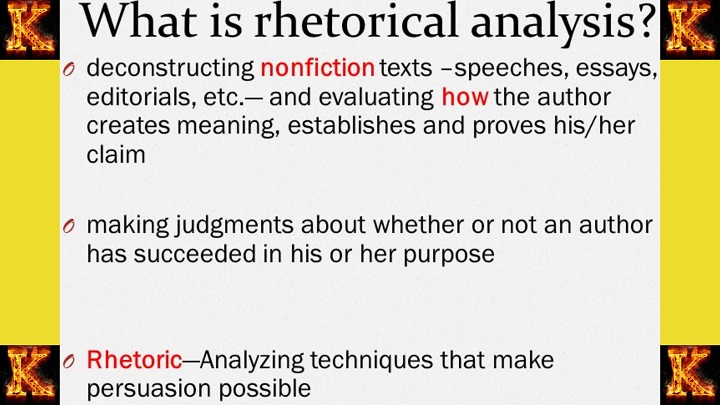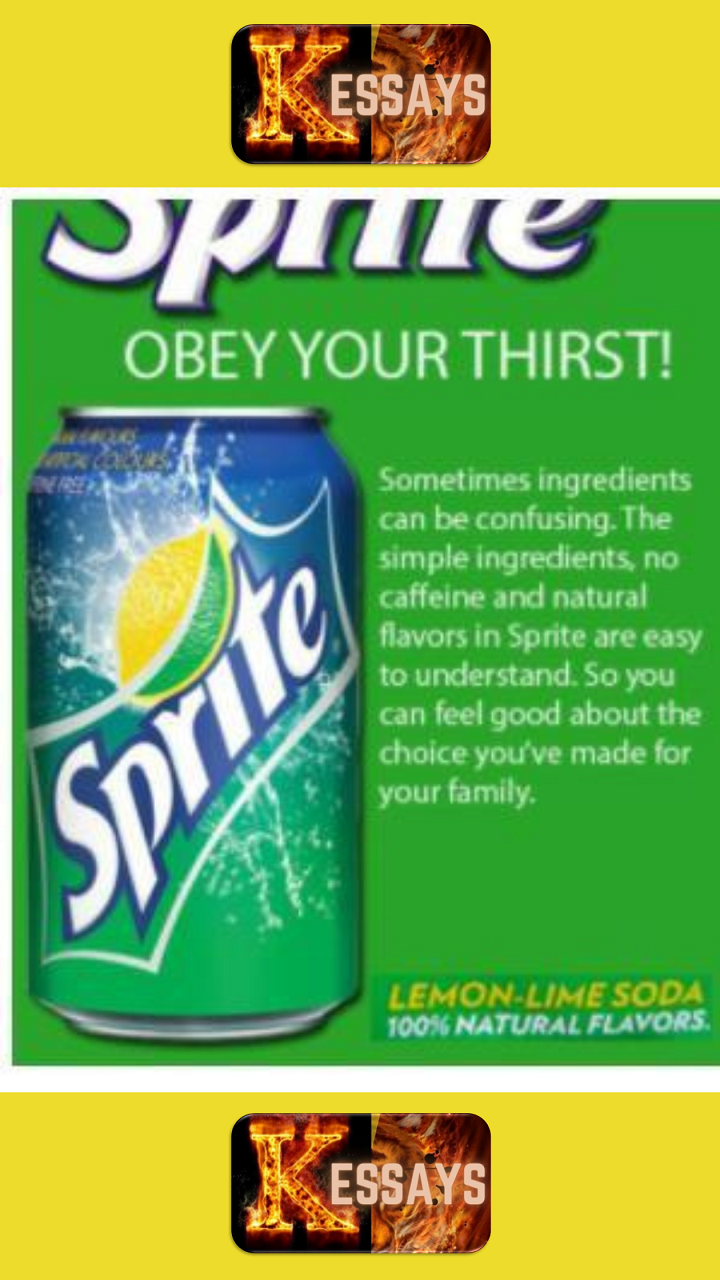I. Introduction to Rhetorical Analysis of Coke Sprite Ads
Rhetorical analysis is a powerful tool for examining and understanding the persuasive techniques employed in advertisements. By conducting a rhetorical analysis of Coke Sprite ads, we can delve into the strategies used to captivate audiences, convey messages, and persuade consumers. This article aims to comprehensively analyze the rhetorical elements in Coke Sprite ads, shedding light on their effectiveness and impact.

II. Analyzing Rhetorical Appeals
Rhetorical analysis involves the examination of rhetorical appeals—ethos, pathos, and logos—that are commonly employed in advertisements. By understanding how these appeals are utilized, we can gain insights into how Coke Sprite ads seek to engage consumers.
A. Ethos in Coke Sprite Ads: Establishing Credibility
Ethos refers to the credibility and trustworthiness of the advertiser. In Coke Sprite ads, the use of celebrities or influential figures can enhance the ethos appeal by associating the product with people of authority or expertise. Additionally, the reputation of the Coca-Cola brand itself can contribute to the ethos appeal, as consumers may have pre-existing positive perceptions of the company.
B. Pathos in Coke Sprite Ads: Eliciting Emotional Responses
Pathos involves appealing to the emotions and desires of the audience. Coke Sprite ads often evoke positive emotions such as joy, happiness, and excitement. Through the use of vibrant colors, lively music, and scenes of people enjoying refreshing moments, these ads aim to create a sense of emotional connection with viewers. Emotional storytelling and relatable situations are common strategies employed to elicit emotional responses.
C. Logos in Coke Sprite Ads: Logical Appeals
Logos appeals to the audience's sense of reason and logic. In Coke Sprite ads, logos can be demonstrated through the presentation of factual information about the product, such as its ingredients, nutritional value, or unique features. Additionally, logical arguments may be used to convince viewers of the benefits or advantages of choosing Coke Sprite over other beverages.

III. Rhetorical Devices in Coke Sprite Ads
Rhetorical devices are linguistic and stylistic techniques used to enhance the persuasiveness of advertisements. In Coke Sprite ads, several rhetorical devices may be employed to capture attention and engage the audience.
- Metaphors and Similes: Metaphors and similes can be used to create vivid imagery and draw associations between the product and positive experiences or qualities. For example, describing the taste of Sprite as "like a burst of fresh citrus" or using metaphors to compare the sensation of drinking Coke Sprite to an invigorating summer breeze.
- Alliteration and Repetition: Alliteration, the repetition of initial sounds in a series of words, can create a memorable and rhythmic effect. Repetition of key phrases or slogans, such as "Obey Your Thirst," can reinforce brand messaging and increase brand recognition.
- Juxtaposition: Juxtaposition involves placing contrasting elements side by side to create an impactful effect. In Coke Sprite ads, juxtaposing scenes of everyday life with moments of enjoyment and refreshment can emphasize the idea that consuming the product enhances ordinary experiences.
IV. Case Study: Analyzing Specific Coke Sprite Ads
To demonstrate the application of rhetorical analysis, let's analyze specific Coke Sprite ads, highlighting the rhetorical elements employed and their impact on viewers.
A. Ad 1: "Refreshing Revitalization"
- Introduction and Context: Provide background information about the ad, including its setting, characters, and central theme.
- Rhetorical Appeals: Identify and analyze the ethos, pathos, and logos appeals present in the ad. Consider how the use of celebrity endorsements, emotional storytelling, and logical arguments contribute to the persuasive power of the ad.
- Rhetorical Devices: Examine the rhetorical devices employed in the ad, such as metaphors, alliteration, and repetition. Discuss how these devices enhance the overall message and engage the audience.
- Visual and Auditory Elements: Analyze the visual and auditory elements of the ad, such as colors, music, and sound effects. Evaluate how these elements contribute to the emotional impact and audience engagement.

B. Ad 2: "Summer Fun and Cool Refreshment"
- Introduction and Context: Introduce the ad and provide relevant information about its setting, characters, and message.
- Rhetorical Appeals: Analyze the ethos, pathos, and logos appeals employed in the ad. Consider how the credibility of the Coca-Cola brand, emotional storytelling, and logical arguments are utilized to persuade viewers.
- Rhetorical Devices: Examine the use of rhetorical devices, such as metaphors, similes, and repetition, in the ad. Discuss their impact on the audience and their contribution to the overall persuasive effect.
- Cinematic Techniques: Evaluate the cinematic techniques employed, such as camera angles, editing, and pacing. Discuss how these techniques enhance the storytelling and audience engagement.
Introduction to Rhetorical Analysis in Marketing and Advertising
Rhetorical analysis is a valuable tool in understanding the persuasive techniques and strategies employed in marketing and advertising. By applying a rhetorical analysis framework, marketers can gain insights into the effectiveness of their campaigns, identify persuasive elements, and refine their messaging to engage and influence target audiences. This article explores the application of rhetorical analysis in marketing and advertising, highlighting its significance in shaping consumer perceptions and driving purchasing behavior.
Understanding Rhetorical Appeals
Rhetorical analysis involves the examination of rhetorical appeals - ethos, pathos, and logos - that are commonly used in marketing and advertising to connect with consumers and persuade them to take action.
Ethos in Marketing and Advertising: Building Credibility and Trust
Ethos appeals focus on establishing credibility and trustworthiness. Marketers often employ testimonials from experts, endorsements from celebrities, or showcase certifications and awards to enhance their brand's ethos. By aligning with credible sources, brands aim to build trust and position themselves as reliable and reputable.
Pathos in Marketing and Advertising: Stirring Emotional Connections
Pathos appeals aim to evoke emotions in consumers. Advertisers use storytelling, compelling visuals, and music to create an emotional connection with their target audience. By tapping into consumers' desires, aspirations, or fears, marketers can elicit emotional responses that influence their decision-making and drive brand engagement.
Logos in Marketing and Advertising: Logical Persuasion and Reasoning
Logos appeals rely on logical persuasion and reasoning. Marketers use data, statistics, and logical arguments to present their product's features, benefits, or competitive advantages. By providing rational justifications and appealing to consumers' logic, brands seek to convince them of the value and superiority of their offerings.
Analyzing Rhetorical Devices in Marketing and Advertising
Rhetorical devices are linguistic and stylistic techniques used to enhance the persuasiveness of marketing and advertising campaigns. By employing these devices, marketers can create memorable and impactful messages that resonate with consumers.
A. Metaphors and Similes: Creating Vivid Imagery
Metaphors and similes are frequently used in marketing and advertising to create vivid imagery and draw associations between the product or brand and positive experiences or qualities. These rhetorical devices can evoke emotions, enhance brand recognition, and convey complex ideas in a concise and relatable manner.
B. Alliteration and Repetition: Enhancing Memorability
Alliteration and repetition help enhance the memorability of marketing messages. The use of repeated sounds or phrases can capture attention, reinforce key brand elements, and make the messaging more memorable and catchy.
C. Hyperbole and Exaggeration: Amplifying Impact
Hyperbole and exaggeration are employed to amplify the impact of marketing and advertising messages. By intentionally overstating certain aspects of their products or services, marketers can create a sense of excitement, intrigue, or urgency, capturing consumers' attention and driving interest.
Case Study: Rhetorical Analysis of a Successful Marketing Campaign
To illustrate the application of rhetorical analysis in marketing and advertising, let's analyze a successful campaign and examine the rhetorical elements employed.
- Introduction and Context: Provide background information about the campaign, including its objectives, target audience, and overall theme.
- Rhetorical Appeals: Identify and analyze the use of ethos, pathos, and logos appeals in the campaign. Assess how these appeals align with the campaign's objectives and target audience.
- Rhetorical Devices: Examine the presence of rhetorical devices in the campaign, such as metaphors, alliteration, and hyperbole. Discuss their impact on the audience and their contribution to the overall persuasive effect.
- Visual and Verbal Elements: Analyze the visual and verbal elements of the campaign, including design, imagery, taglines, and slogans. Evaluate how these elements enhance the campaign's messaging and engage the audience.
Harnessing the Power of Rhetorical Analysis in Marketing and Advertising
Rhetorical analysis is a powerful tool in the arsenal of marketers and advertisers. By applying a rhetorical lens, they can gain deeper insights into the persuasive elements, appeals, and devices that shape consumer perceptions and influence purchasing decisions. By understanding the impact of ethos, pathos, logos, and various rhetorical devices, marketers can refine their messaging, engage their target audience, and drive brand success.

V. Conclusion
Rhetorical analysis offers valuable insights into the persuasive techniques employed in advertisements, allowing us to understand how Coke Sprite ads engage consumers. By examining the rhetorical appeals and devices used, we gain a deeper understanding of the strategies employed to convey messages and influence consumer behavior. Through this analysis, we appreciate the power of rhetoric in shaping advertising campaigns and capturing the attention and loyalty of consumers.




Comments are closed!